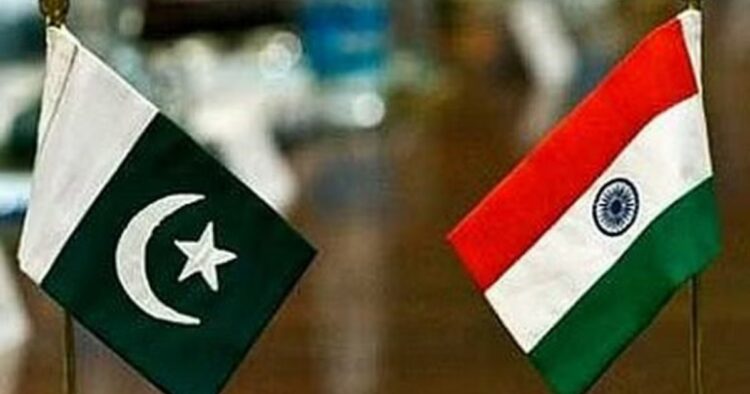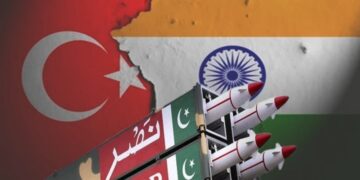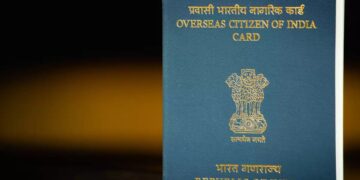As India and Pakistan celebrate their 78th Independence Days on August 15 and August 14 respectively, it’s a crucial time to reflect on the journey both nations have taken since gaining independence from British rule in 1947. Despite sharing the same start, the paths these two countries have taken are starkly different. India has emerged as a shining example of a successful democracy, while Pakistan has struggled with instability, largely due to its continuous political unrest and deep-rooted issues with terrorism.
Let’s take a detailed look at how India has outperformed Pakistan in almost every field, and why Pakistan remains on the back foot.
Economic Powerhouse vs. Economic Struggler
India’s economic growth has been nothing short of phenomenal. With a GDP of $3.937 trillion, India is currently the world’s 5th largest economy, and it is on the verge of becoming the third largest, surpassing both Japan and Germany. By 2024, India’s GDP is projected to reach $4 trillion, marking a significant milestone in its economic journey. The country is growing at an impressive rate of 6.5-7 percent annually, solidifying its position as a global economic powerhouse.
In stark contrast, Pakistan’s economy is languishing. With a GDP of just $374.90 billion, it ranks as the world’s 46th largest economy. The growth rate is a meager 2.38 percent, reflecting the economic stagnation that has plagued the nation for years. Pakistan’s failure to build a robust economy is a direct consequence of its internal instability and poor governance, which have kept it stuck in a cycle of poverty and underdevelopment.
Rising Incomes vs. Economic Stagnation
India’s per capita income has seen substantial growth, reflecting the country’s rapid economic progress. As of 2023-24, India’s per capita income stands at Rs 2.12 lakh ($2,500), with projections indicating it could reach Rs 14.9 lakh by the time the nation celebrates its 100th Independence Day in 2047. This remarkable rise in income levels is a testament to India’s success in lifting millions out of poverty and providing better opportunities for its citizens.
On the other hand, Pakistan’s per capita income is a dismal $1,680, barely showing any signs of significant improvement. The economic hardships faced by Pakistanis are further exacerbated by the country’s inability to attract investment, generate jobs, or provide adequate infrastructure. This stark difference in income levels between the two nations is a clear indicator of Pakistan’s failure to progress.
Infrastructure Marvels vs. Neglect and Decay
India’s infrastructure development has been a cornerstone of its growth. From mega expressways and greenfield corridors to the Bharatmala projects, India has made massive strides in modernizing its infrastructure. The country now boasts metro rail services in at least 15 cities, including Delhi, Mumbai, and Bengaluru, along with the operational Rapid Rail Transit System (RRTS) and the upcoming Mumbai-Ahmedabad Bullet Train project. These advancements have not only improved connectivity but also fueled economic growth.
In contrast, Pakistan’s infrastructure is in shambles. With only one city having an operational metro train system, the country’s lack of investment in infrastructure is glaring. Pakistan’s neglect in this sector has left its cities overcrowded, its roads in poor condition, and its overall development stagnant. This neglect is symptomatic of the broader issues that have kept Pakistan lagging behind India.
Strong Forex Reserves vs. Financial Fragility
India’s forex reserves have skyrocketed over the decades, growing from a mere $0.67 billion in the 1960s to an impressive $674.919 billion in 2024. This growth has provided India with a solid financial cushion, enabling it to weather global economic shocks and maintain stability.
In contrast, Pakistan’s forex reserves are a mere $8.21 billion, barely sufficient to cover its import bills. The country’s financial fragility is further exacerbated by its dependence on foreign aid and loans from global institutions. Pakistan’s inability to build a robust economy and maintain healthy forex reserves is a direct result of its flawed policies and the destabilizing impact of terrorism.
Inflation and Economic Misery
India’s inflation rate is relatively stable, with the All India Consumer Price Index (CPI) at 3.54% as of July 2024. This is a testament to India’s sound economic policies and its ability to manage price stability.
In contrast, Pakistan is suffering from one of the highest inflation rates in the world, standing at a staggering 24.8% in 2024. This figure is a clear indication of the economic mismanagement and chronic instability that have plagued Pakistan for years. The country’s inability to control inflation has led to widespread economic misery, with millions of Pakistanis struggling to make ends meet.
Defence and National Security: A Stark Contrast
India has always prioritized its national security, allocating 12.9% of its budget to defense. In 2024, India’s defense expenditure stands at a whopping Rs 6.219 trillion ($74.3 billion), ensuring that the nation is well-prepared to face any threats.
Pakistan, on the other hand, has allocated only Rs 2,122 billion for its defense spending, which is a mere 1.7% of its GDP. While Pakistan continues to pour resources into harboring terrorism, it neglects its own national security, leaving the country vulnerable and unstable. This misplaced focus has further isolated Pakistan on the global stage, tarnishing its image as a reliable partner.
Literacy and Education: The Knowledge Gap
Education is another area where India has outshined Pakistan. India’s overall literacy rate stands at 74%, with a significant number of educated females (65.8%) and literate males (82.4%). India’s investment in education has paid off, creating a knowledgeable and skilled workforce that drives the country’s growth.
In contrast, Pakistan’s literacy rate is a dismal 58%, with only 46.5% of females and 69.3% of males being literate. The country’s neglect of education has left a large portion of its population uneducated and ill-equipped to contribute to the economy. This knowledge gap is a significant factor in Pakistan’s inability to progress.
Unemployment and Poverty: A Tale of Two Realities
India’s unemployment rate, although impacted by the COVID-19 pandemic, has been on a declining trend. As of 2024, the unemployment rate stands at 8.5%, reflecting the challenges faced by the global economy. However, India’s efforts to create jobs and support businesses have been commendable.
Pakistan, on the other hand, is grappling with an unemployment rate of 8% in 2024, with over 6.61 million people out of work. The country’s inability to generate jobs and support its workforce is a direct result of its economic mismanagement and political instability.
Poverty in India has seen a significant decline, with the poverty rate falling to 4.5-5% in 2022-23. This achievement is largely due to government programs aimed at uplifting the poorest sections of society. In contrast, Pakistan continues to struggle with high poverty rates, with millions of its citizens living below the poverty line.
India’s Global Emergence vs. Pakistan’s Decline
Today, India stands as a major regional power in Asia and an emerging global player. Its voice is heard on the world stage, and its role as a major investment and manufacturing hub is widely recognized. India’s diplomacy and geopolitical strategies have earned the country a place of respect and influence globally.
In contrast, Pakistan has emerged as a failed state, plagued by terrorism, a crumbling economy, and a chaotic political regime. 78 years after independence, Pakistan remains cash-strapped, heavily dependent on foreign aid, and isolated on the global stage. The country’s failure to address its internal issues and its continued support for terrorism have made it a pariah state, struggling to find its place in the world.
As both nations celebrate their 78th Independence Day, the contrast between India and Pakistan could not be more stark. While India has emerged as a successful democracy and a global power, Pakistan remains mired in instability, poverty, and isolation.
The reasons for this disparity are clear – while India focused on building a strong, inclusive, and forward-looking nation, Pakistan has been held back by its own internal demons, particularly its support for terrorism and its inability to govern effectively.
ALSO READ: “Jammu & Kashmir: Indian Army Captain Martyred In Encounter With Terrorists In Doda”

















Comments